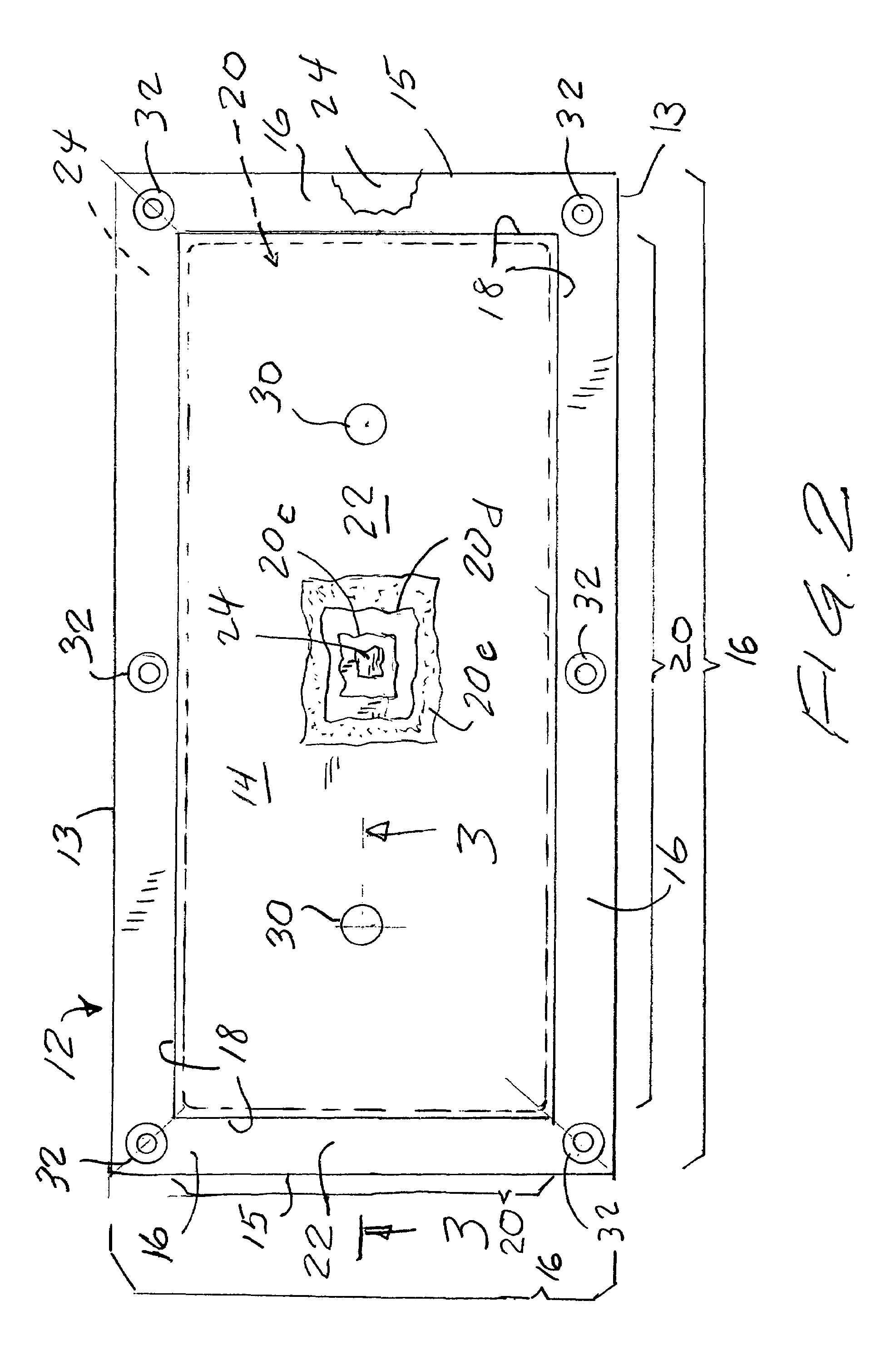Flexible thermally insulative and waterproof barrier
a technology of thermal insulation and waterproof barrier, applied in the direction of heat insulation, walls, transportation and packaging, etc., can solve the problems of weakening of the barrier in the joint area, structural problems, and breaking of the barrier in unsupported positions, and achieve the effect of being flexible enough
- Summary
- Abstract
- Description
- Claims
- Application Information
AI Technical Summary
Benefits of technology
Problems solved by technology
Method used
Image
Examples
Embodiment Construction
[0019]Referring now to the drawing, and in particular to FIG. 1 thereof, therein illustrated is a thermally insulative and waterproof barrier according to the present invention, generally designated by the reference numeral 10. The barrier 10 is intended for the protection of an exterior (not shown)—for example, a slab, foundation, wall or like structure, whether formed of concrete, brick or like construction material—against both heat (and loss of heat) and moisture. The term “exterior” is used herein and in the claims to broadly refer to any or all of the outer surfaces, including the sides, top and bottom.
[0020]The barrier 10 is comprised of a plurality of generally rectangular, substantially flexible blankets, generally designated 12, nine full blankets being illustrated in FIG. 1. Each blanket 12 defines a central body 14 having edges 18 and a peripheral margin 16 extending about the edges 18. The blankets 12 forming the barrier 10 are disposed relative to one another such that...
PUM
 Login to View More
Login to View More Abstract
Description
Claims
Application Information
 Login to View More
Login to View More - R&D
- Intellectual Property
- Life Sciences
- Materials
- Tech Scout
- Unparalleled Data Quality
- Higher Quality Content
- 60% Fewer Hallucinations
Browse by: Latest US Patents, China's latest patents, Technical Efficacy Thesaurus, Application Domain, Technology Topic, Popular Technical Reports.
© 2025 PatSnap. All rights reserved.Legal|Privacy policy|Modern Slavery Act Transparency Statement|Sitemap|About US| Contact US: help@patsnap.com



